The History and Evolution of Beat-Em-Up Games
Grab your conveniently placed weapons, warm up a found turkey leg, and join us for a look at the evolution and history of beat-em-up games.
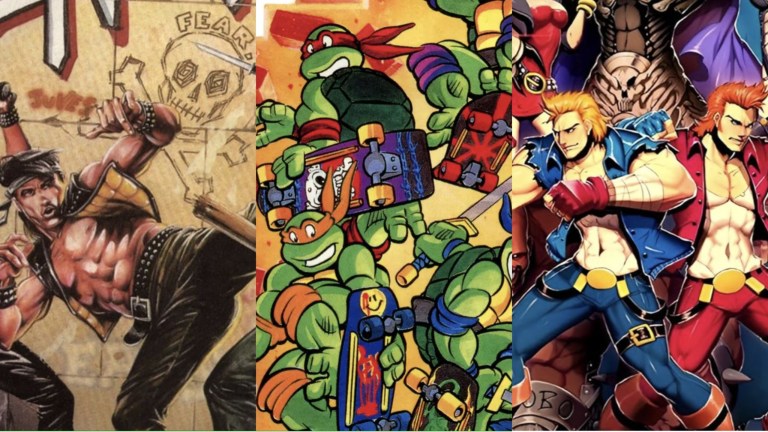
Before video games truly advanced, the arcade was where it was at. Much like Saturday morning cartoons, it’s one of those obsolete ideas from the past where you get why it’s gone, but damn if it didn’t represent some wonderful times. Arcade games seemed like the zenith of what a video game could look and feel like. Consoles were great and all, but you knew that if you were getting a port of an arcade classic for your 8-bit or 16-bit system, you weren’t getting the full package.
One of the genres that truly felt like the soul of the arcade experience was the beat ‘em up. The idea that you, a couple of friends, or even some complete strangers could join together at a cabinet and go on a trek to beat up as many enemy thugs as possible until you either ran out of quarters and couldn’t continue, or you successfully defeated the final boss.
From the mid-80s to early-90s, the beat ‘em up really thrived thanks to the efforts of Irem, Technos, Konami, Capcom, Sega, and so many others. We got everything from a psychedelic adaptation of Batman Forever to the Simpsons fighting a giant, angry bowling ball in their collective nightmare. You can kick ass with everyone from a boxing kangaroo, a wrestling Elvis impersonator, Rufio, the Sub-Mariner, the Predator, and even (BUCKY!) Captain Bucky O’Hare.
Here’s a look at the games that truly defined the genre’s history.

Kung-Fu Master (1984)
Irem’s Kung-Fu Master, also known as Spartan X in Japan and just Kung-Fu for its NES port, got the ball rolling. Despite the sidescroller seeming like an obvious Game of Death knockoff, it’s actually based on the Jackie Chan film Wheels on Meals, directed by Sammo Hung. Yeah, go figure. While the game is very simplistic and most of the enemies go down in one hit, it still holds up and you can see the beginnings of the genre.
With Kung-Fu Master’s success, an initial sequel was scrapped, then altered into 1988’s Vigilante, which added nunchakus to the protagonist’s arsenal and got him out of that cramped martial arts death house. There was also a Famicom sequel called Spartan X 2 in 1991 that featured the same basic gameplay but with better 8-bit graphics and backgrounds. Irem made various other beat ‘em ups, but none that made any impact.
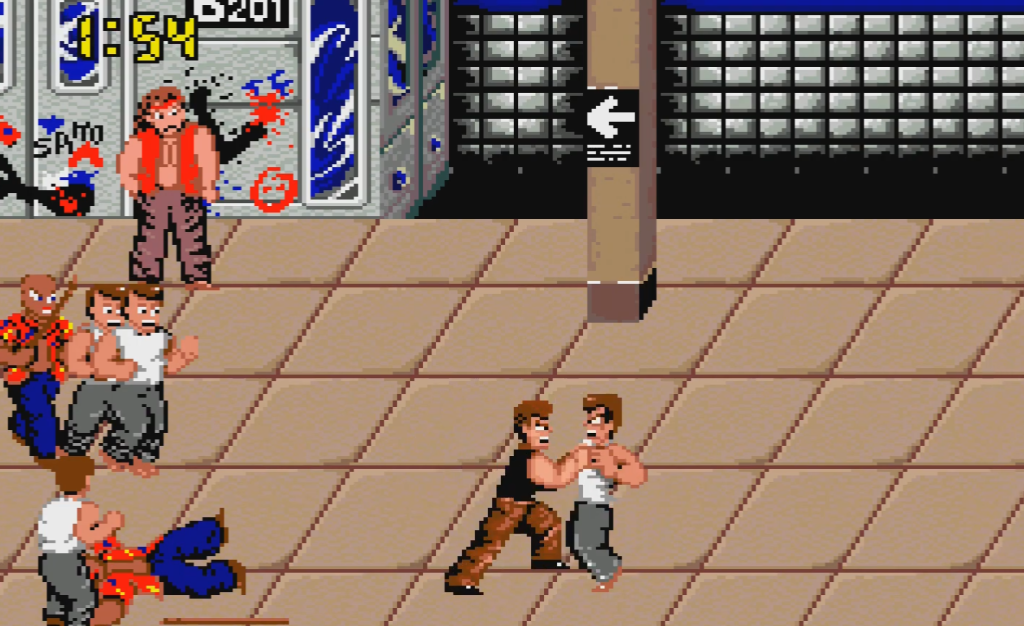
Renegade (1986)
Kung-Fu Master was a good time, but getting ganged up on wasn’t quite as threatening when you’re on a 2D plane. Enter 1986’s Nekketsu Kouha Kunio-kun, which changed it all up for the better. The initial version of the game was based around Kunio, a Japanese high school student who takes part in fights against fellow hoodlums. Feeling other countries couldn’t quite identify, Technos localized it into Renegade, which has more of a grimy, inner-city atmosphere. Instead of beating up other teenagers in an attempt to avenge your best friend’s ass-kicking, it became one man fighting bikers in order to save a damsel.
Renegade gave us belt-scrolling, which added another axis for the action, allowing you to move up and down the level instead of merely left and right. Your character is armed with various attacks, including throwing and mounted punches on a downed opponent. Most importantly, it introduced the idea of combination punches. Back in Kung-Fu Master, bosses would take damage from your hits, but would casually power through. Renegade gave us the first instances of the opponent being stunned, allowing you to unload more attacks.
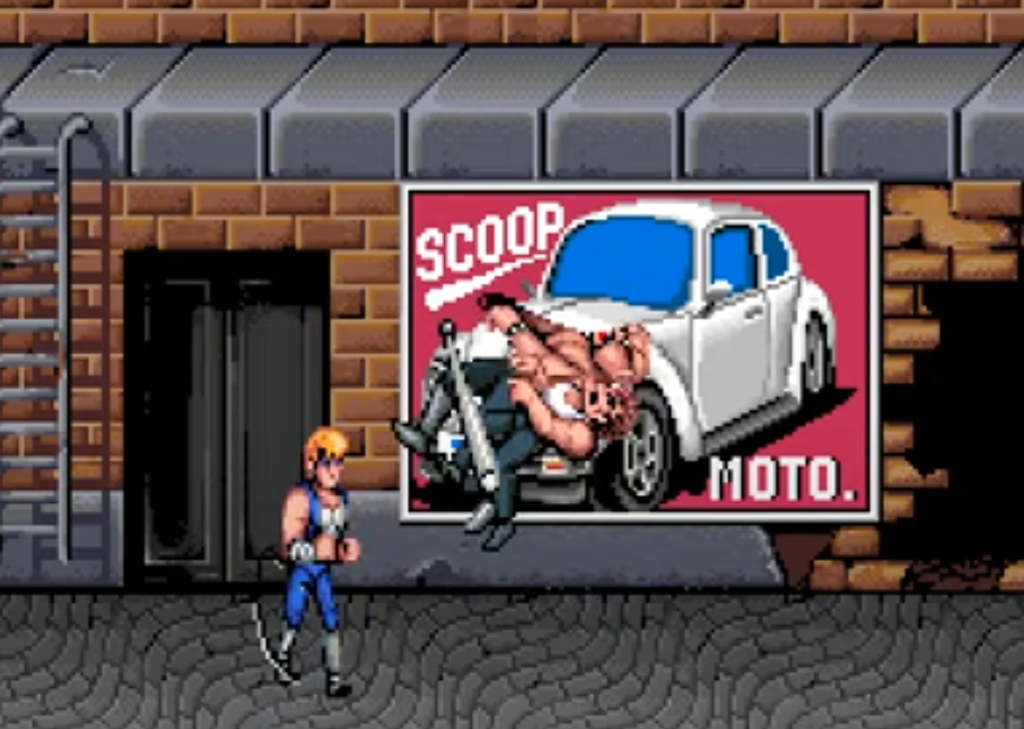
Double Dragon (1987)
As the translation from Nekketsu Kouha Kunio-kun to Renegade was based around the aesthetics of The Warriors, Technos decided to keep going with that idea when designing the following year’s Double Dragon (along with a touch of Mad Max and Fist of the North Star). This time, the game had two-player co-op and instead of the stages being battlefields stretched several screens wide, the entire game was one continuous length.
The game suffers from some slowdown, is a bit rough around the edges, and it is incredibly short, but it does feel like the first true beat ‘em up, especially with the ability to fight alongside your buddy. The Double Dragon franchise would become incredibly prolific, giving us an excessive amount of ports, sequels, a Battletoads crossover, and a handful of reimaginings.

Golden Axe (1989)
Multiplayer beat ‘em ups had the issue that the protagonists were all identical outside of the palette. Then Sega’s Golden Axe changed things up by letting you play as a barbarian, Valkyrie, or dwarf, each with their own playstyle. Not to mention they came with magic-based special attacks that could clear the screen. The fantasy setting made for a perfect environment that set Golden Axe apart from the usual street fighting campaigns that flooded the market.
Unlike their Nintendo rivals, Sega went knee-deep into the genre when it came to first-party releases. This led to a fantastic and improved Golden Axe port for the Genesis. The Genesis would receive two more sequels, while the arcade would get its own sequel in Golden Axe: The Revenge of Death Adder that added some slick visuals that the 16-bit console likely couldn’t match up to.
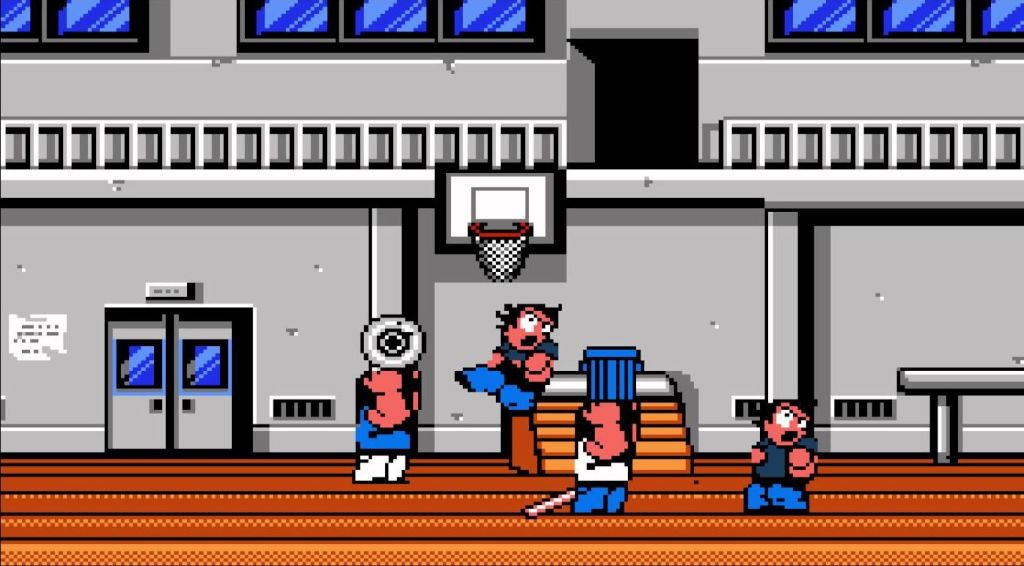
River City Ransom (1989)
A console beat ‘em up is usually at a disadvantage due to how short the arcade releases are and how stretching them out can make them repetitive. Sometimes developers would make up for it with an increased difficulty level (ie. Renegade, Double Dragon 3). River City Ransom, on the other hand, was Technos embracing the hardware by thinking outside of the box. Through its non-linear action and RPG elements, this Kunio adventure became a fresh take that was really before its time.
Kunio and Riki (Alex and Ryan in the US) have to power through their high school antagonists by beating them up so badly that they turn into coins. Then they use those coins to level up and learn new techniques and abilities to keep up with the ramping difficulty. The addictive gameplay matches up with it all, allowing lots of satisfying options to thrash your enemies, even with the game’s blocky character design.
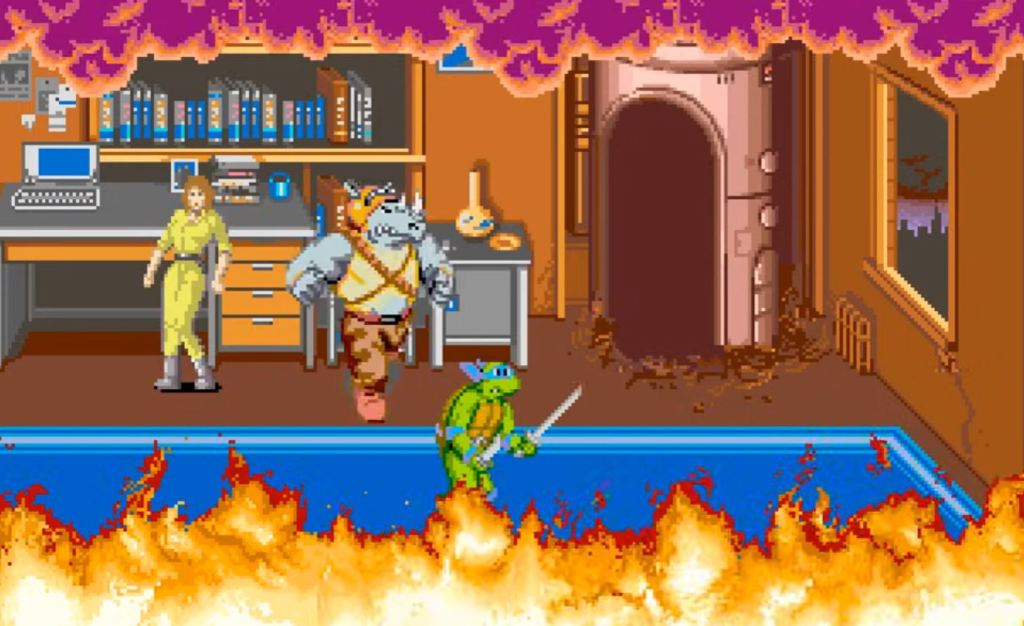
Teenage Mutant Ninja Turtles (1989)
Konami’s first beat ‘em up was Crime Fighters, which also introduced four-player co-op. Unfortunately, the game is bland and ugly, so there’s not much to talk about. Not that it truly matters, as it was completely overshadowed a few months later by Konami’s Teenage Mutant Ninja Turtles. Not only did this do a better job with the four-player aspect, what with each Turtle being just different enough, but its pixel art still looks fantastic, and it’s just brimming with personality. This might just be the best licensed video game of the 1980s and its sequel Turtles in Time is perhaps in the top ten for best licensed game ever.
There’s a reason why the franchise keeps skewing back to this and its sequels. Teenage Mutant Ninja Turtles as a concept fits the beat ‘em up setting like a glove. You have the four heroes with an emphasis on teamwork, iconic villains who make perfect bosses, Foot Soldiers make for the best cannon fodder, and enough weird aspects of the lore to keep things interesting. Compare this to Konami’s attempt at The Simpsons, which tried its best with the source material that just did not mesh with the genre.
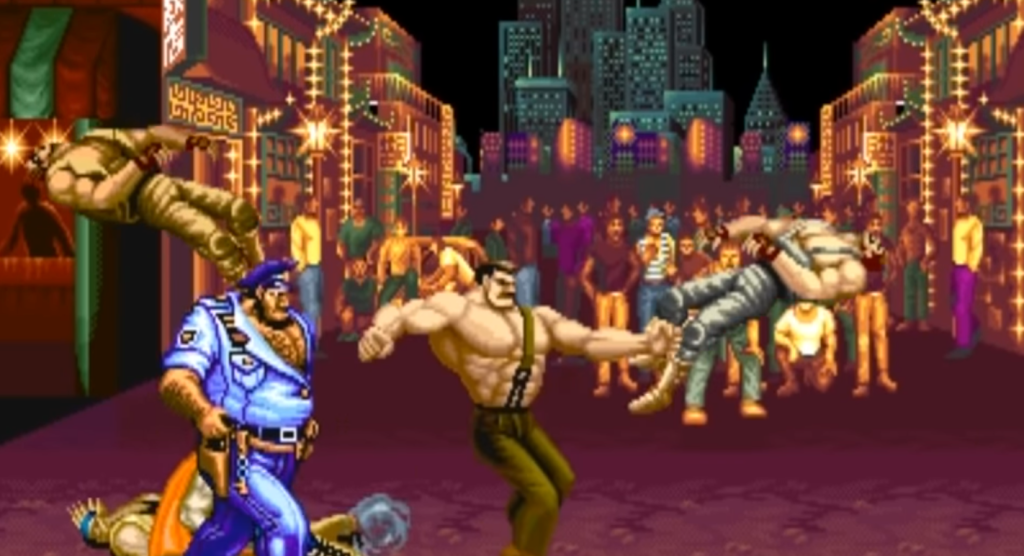
Final Fight (1989)
Capcom released an excessive amount of beat ‘em ups over the years, but none hit quite as hard as their first. Initially meant to be a Street Fighter sequel, despite having nothing to do with Street Fighter at the time, Final Fight not only came with absolutely impressive, massive sprites, but it also introduced certain concepts that defined the genre. For instance, the ability to smash everyone in the near vicinity at the cost of a chunk of your health, or even the whole thing where you smash the environment to uncover health and weapons.
Beat ‘em ups always have the most thrown-together story with some questionable choices (how much damage was Shredder doing to the time-space continuum by sending so many goons through history?), but there’s a delightful and memorable grindhouse feel to Final Fight’s lore. I mean, it’s about a professional wrestling mayor who goes on a vigilante rampage alongside his violent potential son-in-law and a random ninja dude. And they fight a family made up of Andre the Giants. What’s not to love?
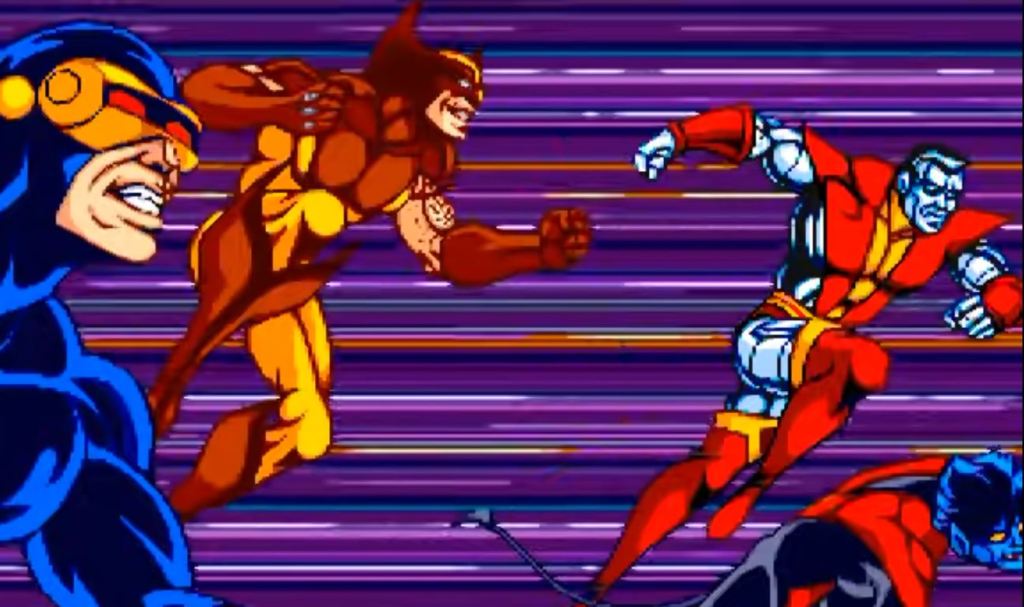
X-Men (1992)
Funny thing, during the early 90s, there were four different Marvel beat ‘em ups in the arcade and they were all by different developers: Data East’s Captain America and the Avengers, Sega’s Spider-Man, Capcom’s Punisher, and Konami’s X-Men. While I’m of the opinion that Punisher is the best of the four, one cannot deny the impact of X-Men. Based on the failed animated pilot Pryde of the X-Men from three years earlier, the game truly embraced the eclectic world of robot-exploding mutants, coming out just before the Fox cartoon series would hit the scene and really make the superhero team a mainstream juggernaut. A mainstream juggernaut inexplicably carrying a bazooka.
What makes X-Men truly memorable was that it took the main setup of these kinds of games and went bigger. As big as you could get at the time. If you were unlucky, you would find a mere two-player cabinet. A lot of the time, your arcade would have a four-player cabinet. The true gift of the gods was the six-player, double-widescreen cabinet, allowing a screen utterly filled with heroes and villains. Granted, that meant someone had to get stuck playing as Dazzler, but them’s the breaks.
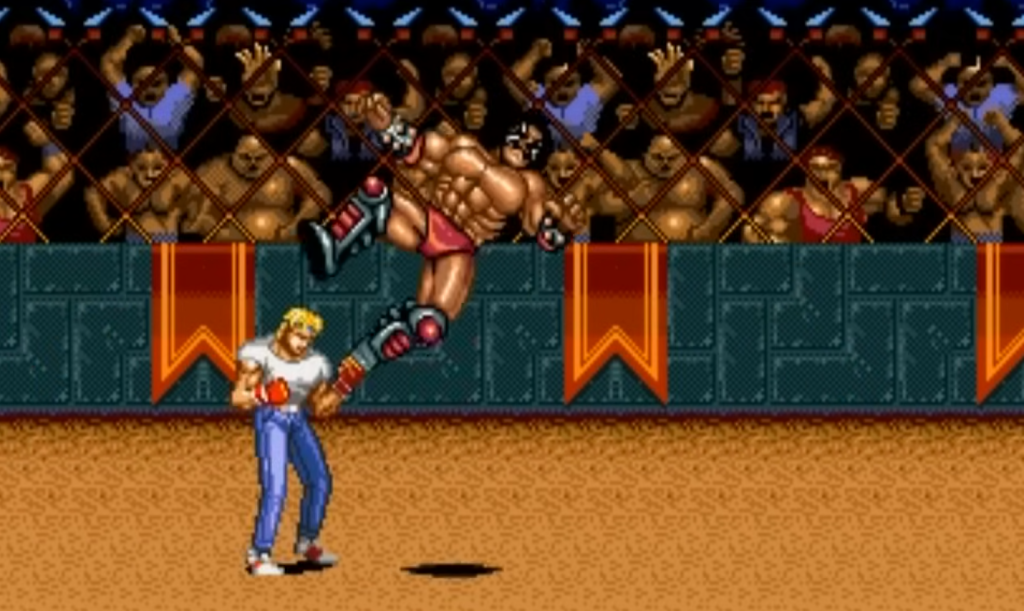
Streets of Rage 2 (1992)
Streets of Rage 2 didn’t really bring anything new to the table. It was no huge revolution to the genre. Regardless, it stands out because the game is one of the most overall fantastic beat ‘em ups ever.
The first Streets of Rage was a great Sega counterpart to Final Fight, but they followed it up with an improvement in every sense. The graphics look better, the music is outstanding for something out of the Genesis, the engine is top-notch, and it’s all just so well-balanced. During the 16-bit era, this was one of the best entries.
One of the things that really stands out with Streets of Rage 2 is that Sega reverse-ported it. The Streets of Rage trilogy was created for the Genesis, but Streets of Rage 2 was such a wonderful piece of work that they simply put it in arcades with barely any alterations. That’s absolutely insane to think about. Unfortunately, its follow-up in Streets of Rage 3 never hit the same heights, even with improved visuals. It tried a little too hard with its added cutscenes and story elements and did not hit the landing.
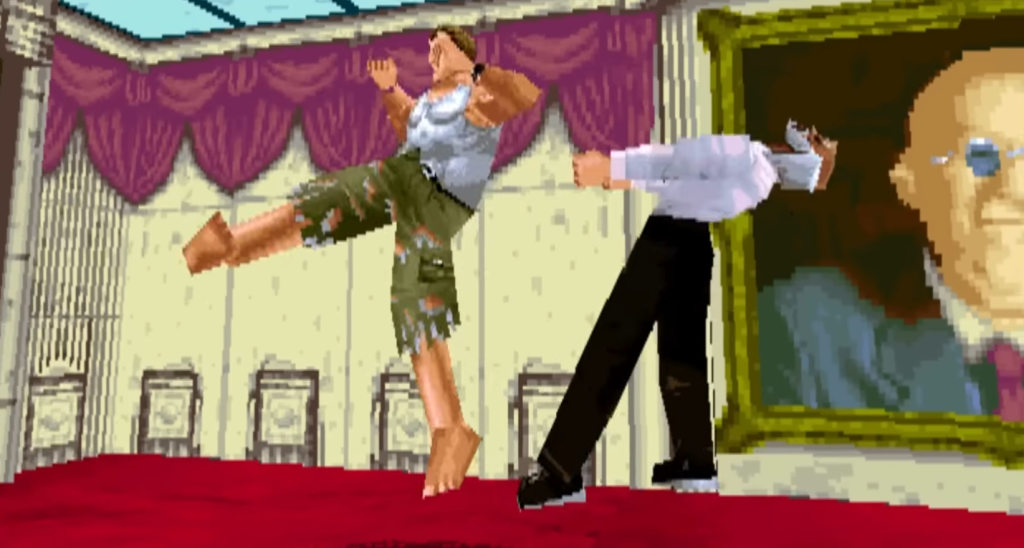
Die Hard Arcade (1996)
By the mid-90s, the beat ‘em up was losing steam. The video game industry was becoming obsessed with polygons. It did not matter if the quality was there or if it even looked good, they were desperately chasing the new hotness by embracing the new 3D landscape. This did not do the beat ‘em ups many favors, as the few attempts to bring it to 3D did so usually at the cost of good gameplay and/or the multiplayer that solidified the fun factor.
At least Sega had one more card up their sleeve. They were able to make a solid 3D beat ‘em up with Die Hard Arcade (also known as Dynamite Deka, as Japan wasn’t privy to the movie license). The game has John McClane and new character Kris Thompson fight their way through a skyscraper to save the President’s daughter from terrorists. Weapons are littered everywhere and you’ll need them to take out all the endless enemies. For added fun, you can also unlock the ability to play as the heroes from Golden Axe, because we might as well bring everything full circle.
I still think Argyle should have been unlockable.
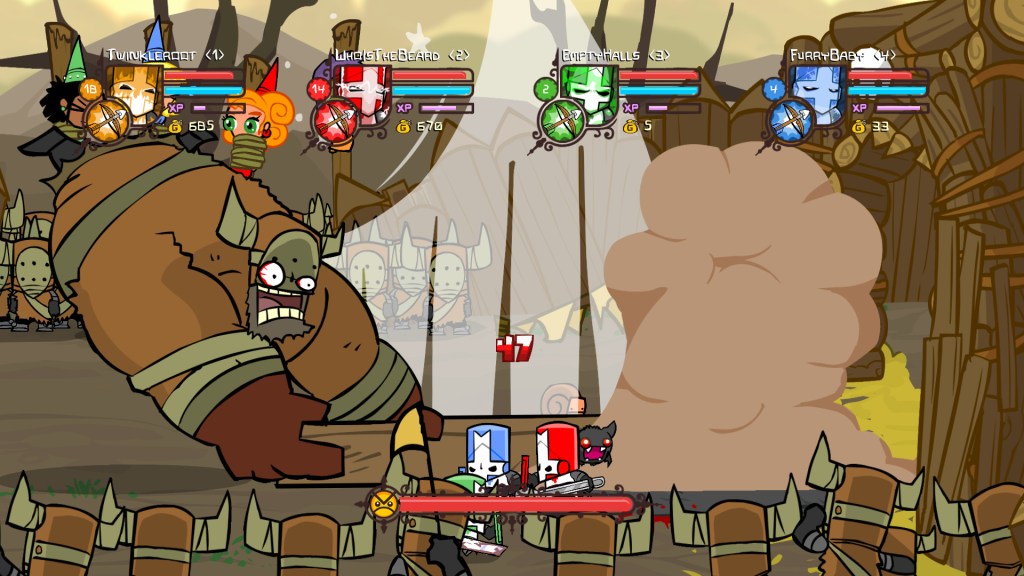
Castle Crashers (2008)
The beat ‘em up genre withered away for years. While there were a couple of okay games here and there, there was just no juice there after the death of the arcades. Attempts to revitalize the different franchises either got canceled or became garbage releases like Final Fight: Streetwise and Golden Axe: Beast Rider. Thankfully, the world of indie gaming was going to save everything.
Feeling like the culmination of what internet Flash gaming was leading to, Castle Crashers hit the scene with fun hack ‘n’ slash gameplay, lots of variety, and a febrile sense of humor allowing it to stand out. It also put a huge emphasis on the multiplayer aspect, showing that while the arcade scene had kicked the bucket, there was promise in the world of online connections. With digital marketplaces becoming a force during this time, publishers started to realize that there was some gold in throwing these types of games – past, present, and future – onto consoles.

Double Dragon Neon (2012)
WayForward had really outdone themselves when they were handed the Double Dragon license. Despite so many games, a movie, a cartoon, and even a Marvel Comic miniseries (where it turns out Billy and Jimmy’s father is Stan Lee), Double Dragon never had a strict lore or personality outside of “martial artists fight hoodlums, usually in a dystopian city.” WayForward took what worked with the setup and brought it into the 2010s by making it an in-your-face throwback with updated graphics that added plenty of new ideas and designs to make it truly fresh. It’s a game where you collect tape cassettes as you go to space to fight a supervillain known as Skullmageddon. It’s beautiful.
Nostalgia for these glory days was starting to really kick in and developers were figuring out how to capitalize on it. It’s rather telling that another revival attempt, Double Dragon IV, would arrive five years later. Instead of trying something new, it was just a bland attempt to revisit the NES games’ style and gameplay, while adding nothing more. It fell flat because others were realizing that you could celebrate the past while moving forward.
Since then, the genre has exploded with sequels, remakes, and reimaginings of Teenage Mutant Ninja Turtles, Streets of Rage, Ninja Warriors, River City Ransom, and so on. New games have shown up that wear their inspirations on their sleeve, like Fight ‘N Rage, Final Vendetta, and Scott Pilgrim vs. The World: The Game. A game type that had once fallen due to the feeling that it had nowhere else to go is now showing that there’s more promise to be mined. It found the roast beef sitting on the street and chowed down.
